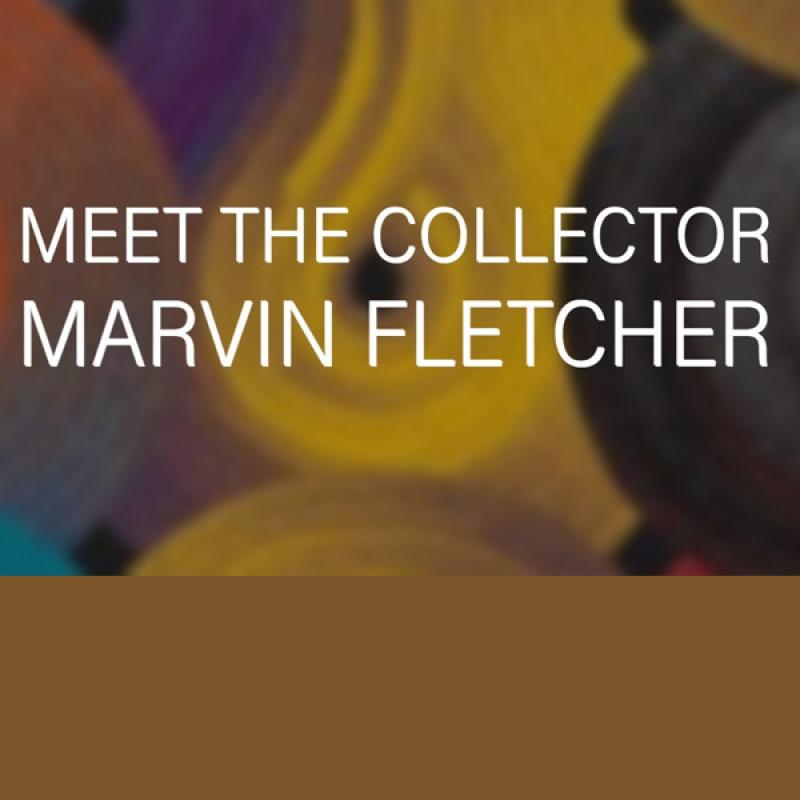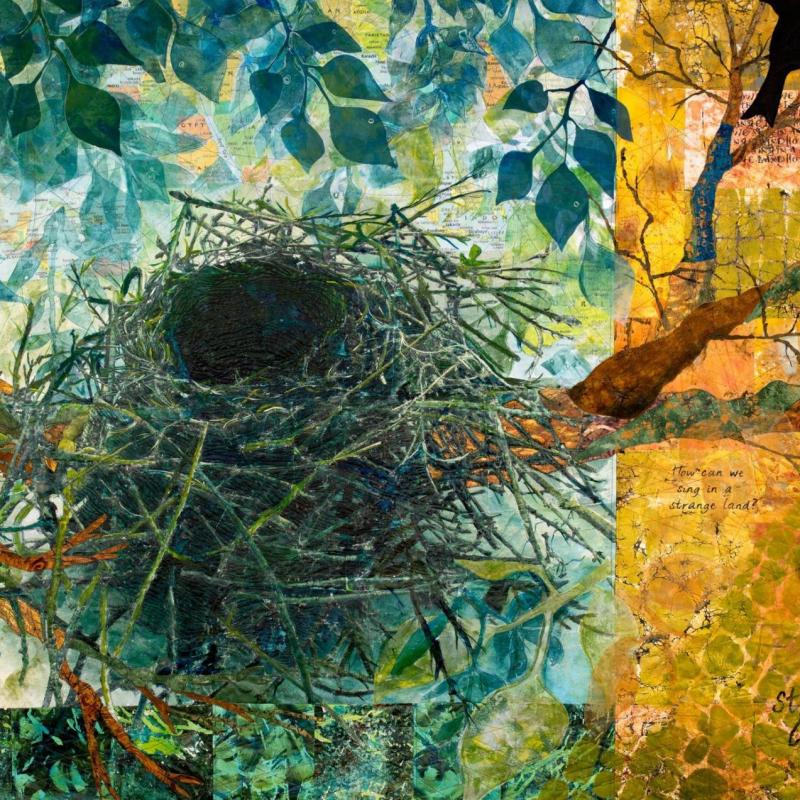Reprinted from Art Quilt Collector #5
When Marvin Fletcher bought his wife, Hilary Morrow Fletcher, an art quilt as a 20th wedding anniversary gift in 1985, little did he realize it was just the first of many art quilts the Athens, Ohio, couple would purchase.
“We didn’t have a vision of collecting as an ongoing thing, but once we bought one quilt, we knew it was possible to buy more,” Marvin said. “Neither of us said we wanted to collect quilts; our collecting really started as an accident. I’m not sure when we real- ized we had a collection, but at some point it struck us that we did. It wasn’t a conscious decision to collect, but it was something we enjoyed doing together.”
When Marvin bought that first quilt, Hilary had just become project director of Quilt National, the biennial art quilt exhibition sponsored by the Dairy Barn in Athens, Ohio. The quilt was Flowerseed Farm by Holley Junker, which was co-recipient of the Award for the Most Innovative Use of Medium at Quilt National 1985.
In 2006, as Hilary was preparing for Quilt National 2007, doctors discovered she had cancer of the liver, her second bout with cancer in seven years. She died August 11, 2006. By then, collecting art quilts— most from Quilt National exhibitions or from quilts entered in Quilt National but not juried into the exhibition — had become so much a part of life for Marvin and Hilary that Marvin continued collecting.
Marvin said that since Hilary’s death, he may have chosen a few quilts she would not have selected, but his process for picking quilts to purchase remains close to the process they developed together.
“When Hilary went through entry slides of pieces submitted for consideration for Quilt National exhibitions, she would pick out ones she thought I’d like,” Marvin said. “I like color and design, with less focus on technique. Since Hilary died, people at the Dairy Barn have helped me make selections.”
Marvin’s starting point remains identifying pieces he is drawn to. Then other criteria kick in. “I have size limitations; pieces have to fit on the walls of my home,” he said. “And there’s a price above which I don’t go. My collection doesn’t have a theme, and generally, I don’t buy a piece by an artist I already have. There are a few artists from whom I have more than one quilt. For example, I have three pieces from Noriko Endo.”
Marvin said he usually buys two to four pieces from each Quilt National. He and Hilary commissioned two quilts for their collection, and they some- times bought quilts from shows they attended. Marvin has gone to a few shows on his own in recent years. The Fletchers named the collection the Marbaum Quilt Collection, combining their fathers’ original surnames, Marowitz and Feigenbaum.
As the collection grew, the Fletchers knew they needed more space so they could have a larger selection hanging at a time. “In the 1980s, after we’d started buying quilts, we decided we needed to expand our house,” Marvin said. “We worked with a local architect to design a new living room and a second floor — the living room to showcase quilts and the second floor for storage of those not on display. In the living room, we used neutral colors, installed special lighting, built high ceilings, and included hanging strips. The room has windows, but I never open the blinds so I don’t expose the quilts to the sun.
“Hilary taught me to rotate the quilts so we’d see new things and also to give the quilts a break from the stress of hanging. I have quilts all over the house. Hilary created a database of our collection that I keep up and use to rotate quilts a least once a year.”
Marvin is considering where he will donate the quilts some day, as his children, while interested in having a piece or two from the collection, are not interested in maintaining and housing all the pieces, which numbered more than 90 before Quilt National 2015. His goal is to find a place that will take care of the quilts and share them with the public. In the meantime, he’s willing to loan the quilts for exhibitions. For example, a portion of the collection was displayed at the San Jose Museum of Quilts and Textiles in San Jose, California and another portion at the Texas Quilt Museum in La Grange. “I buy the quilts for enjoyment, not as an invest ment,” Marvin said.
Marvin continued collecting during Quilt National 2015. As in the past, he reviewed all the entries, a process that has become much quicker since the introduction of digital photography. “I make initial choices without any clue as to their size or price,” he said. “I narrow my list some, then I consult with the people at the Dairy Barn. Once I know the sizes and prices, that knocks some pieces out. When I get down to the last six or seven pieces, I usually go with the pieces the jurors have selected for Quilt National.
“In the end, I put down 10 percent for the right of first refusal on one or several quilts. These pieces, which are part of the Quilt National tour for two to three years, remain listed for sale while touring. If someone else wants to buy them, then I must decide if I want them. If so, I purchase them at that time.” If no one else wants to purchase them during the tour, Marvin can purchase them at the end of the tour.
Marvin said he will continue collecting as long as he enjoys doing so. “I see no reason to stop collecting,” he said. “I really like the art form, and I like living with the quilts.”
Marvin, now retired from full-time work as a history professor at Ohio University in Athens, served on SAQA’s board as treasurer and stays connected to Quilt National by volunteering to assist with the exhibition’s website. He also established an award named for Hilary.
“She always kept track of who entered Quilt National,” Marvin said. “She was excited when someone who had tried
a number of times finally got in, so we named the award the Hilary Morrow Fletcher ‘Persistence Pays’ Award. It goes to the person who gets into the show after trying the most times.”


